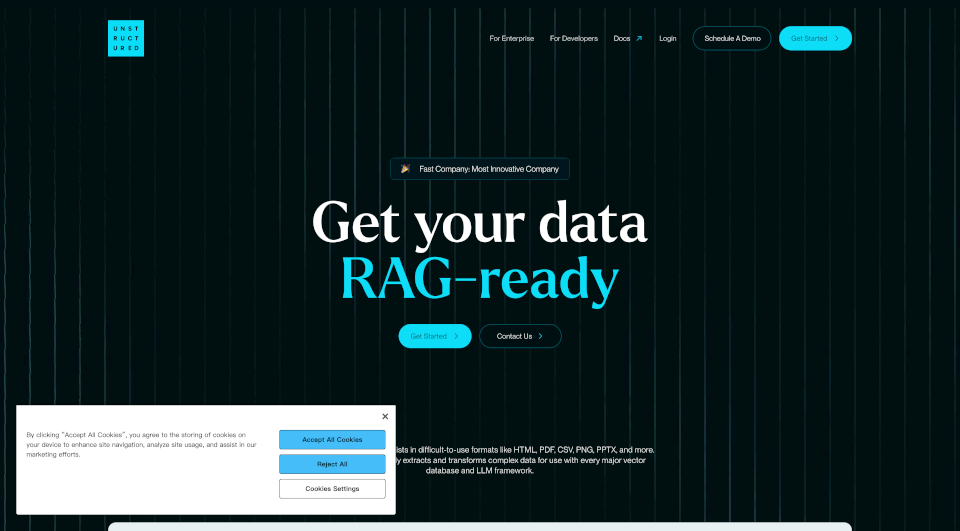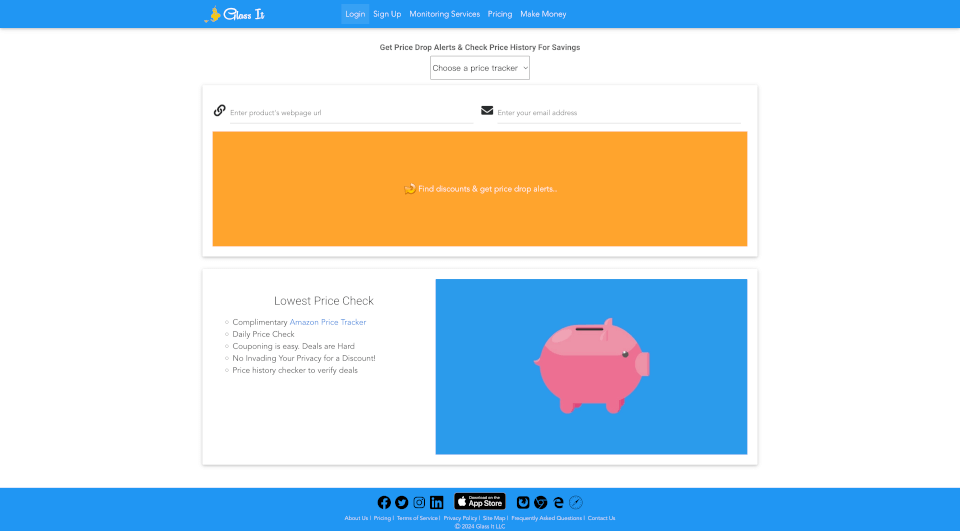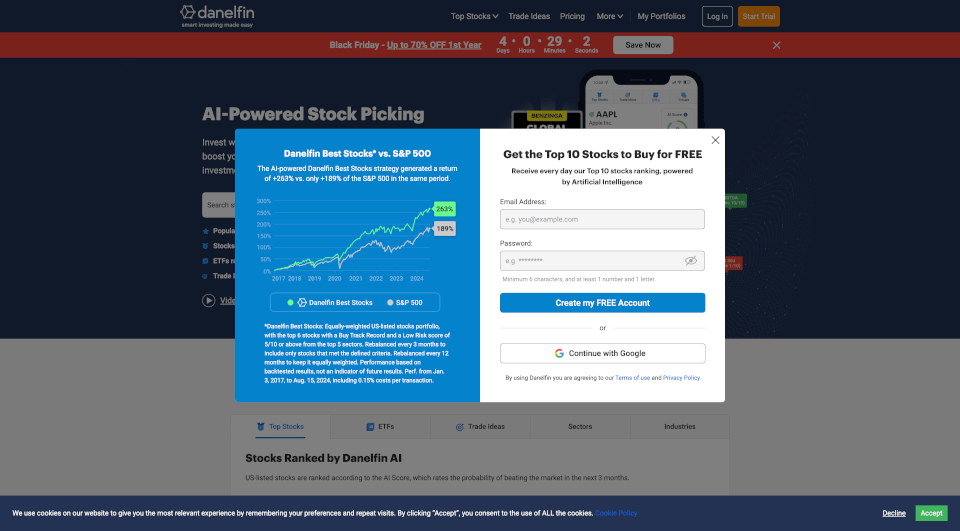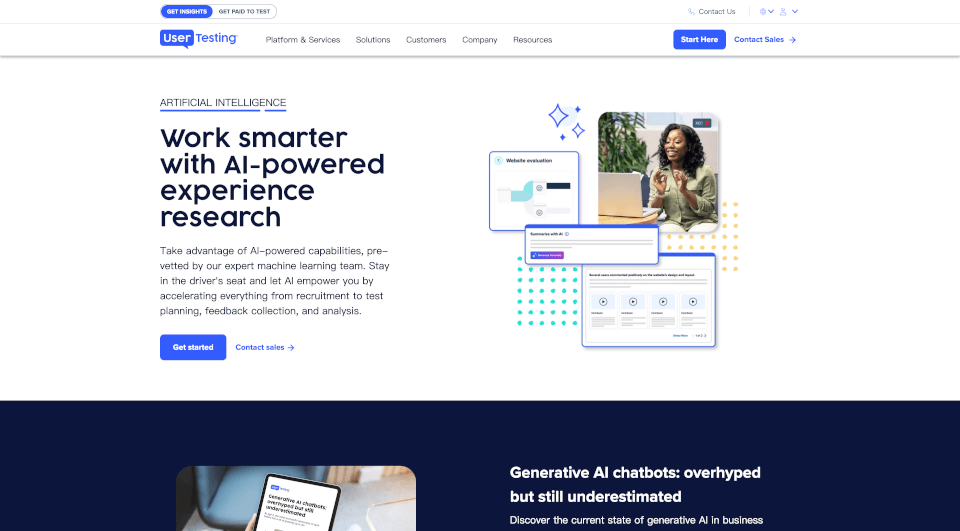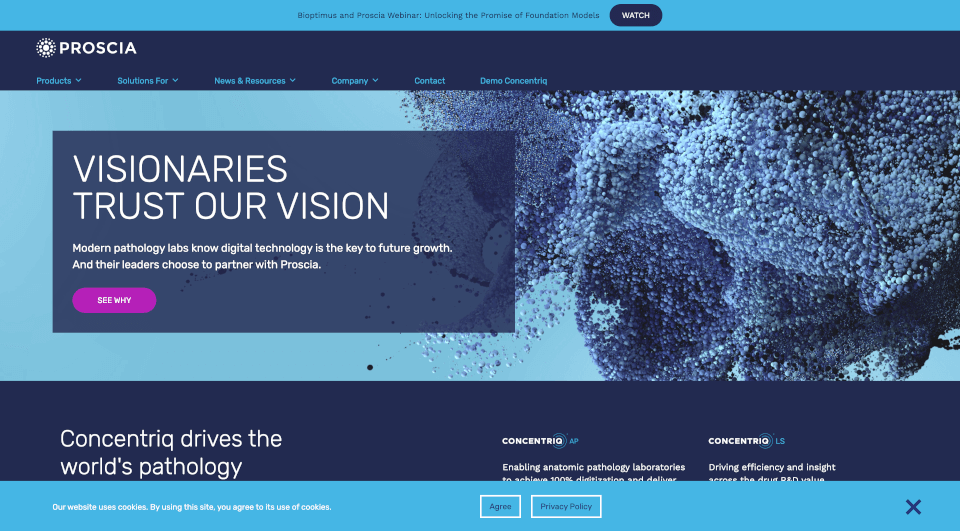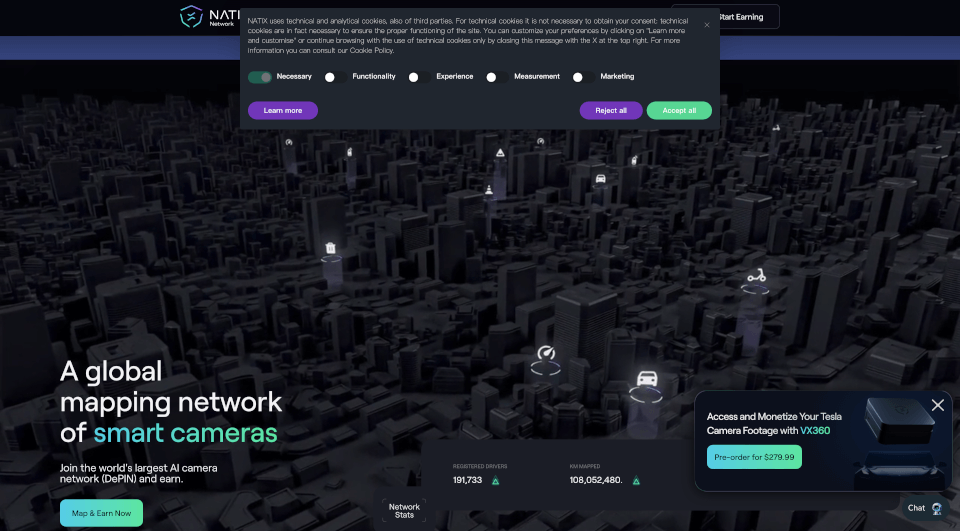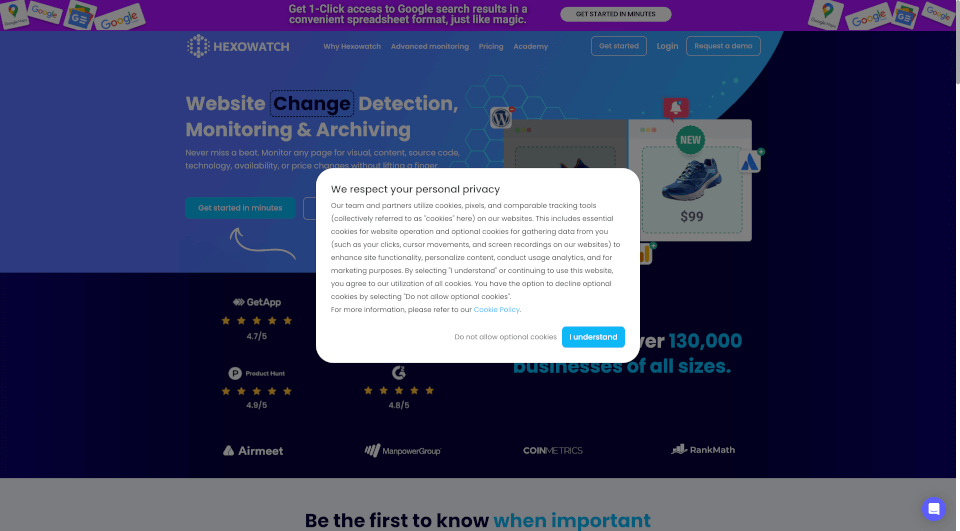What is Unstructured Technologies?
Unstructured is an innovative platform designed to prepare enterprise data for large language models (LLMs). With the ever-increasing amount of unstructured data generated daily, organizations struggle to harness its value effectively. Unstructured bridges this gap by transforming complex formats such as HTML, PDF, CSV, PNG, and PPTX into AI-ready JSON files, enabling seamless integration with modern AI frameworks and vector databases.
What are the features of Unstructured Technologies?
Efficient Data Transformation: Unstructured specializes in creating a smooth pipeline for data extraction and transformation to meet the unique requirements of AI applications. It supports all major file types, ensuring no data is left behind.
Enterprise-Grade Connectors: The platform offers robust connectors that facilitate the collection of data from various enterprise environments, making it easy to source and prepare your data for LLMs.
Scalability: Designed to handle data at scale, Unstructured allows data scientists and engineers to preprocess vast amounts of information quickly and efficiently, saving valuable time that can be redirected to analysis and model building.
User-Friendly Interface: The intuitive interface enables users to manage their data processing tasks without requiring extensive technical expertise. This democratizes access to AI capabilities within organizations.
Clean and Curated Data Delivery: The output from Unstructured is consistently high quality, providing organizations with clean data free from artifacts that could hinder model performance.
What are the characteristics of Unstructured Technologies?
Multi-Format Support: One of the standout features of Unstructured is its ability to handle any document type, irrespective of layout. From text-heavy reports in PDF format to complex strategies outlined in PPTX presentations, it extracts and structures information effortlessly.
Seamless Integration: Unstructured integrates with numerous LLM frameworks, ensuring compatibility with existing user environments and workflows. This makes it ideal for organizations looking to implement AI solutions without overhauling their entire data pipeline.
Real-Time Data Processing: The platform processes data in real-time, allowing organizations to make decisions based on the latest insights extracted from their unstructured data sources.
Community Support: By engaging with a community of developers and data scientists, Unstructured benefits from continuous enhancements and innovations, ensuring that users have access to the latest advancements in the field.
What are the use cases of Unstructured Technologies?
Business Analytics: Organizations can utilize Unstructured to mine insights from quarterly reports, sales data, and customer feedback stored in various document formats, aiding in strategic decision-making and operational improvements.
Customer Support Enhancements: By processing FAQs, support tickets, and customer interactions, Unstructured helps companies improve their customer service models, creating more effective automated responses and support systems.
Market Research: Marketing teams can analyze large volumes of unstructured data from surveys, feedback forms, and social media to gauge consumer sentiment and improve product offerings.
Research and Development: Universities and research institutions can leverage Unstructured to analyze academic papers, literature reviews, and experimental data, facilitating a deeper understanding of findings and trends in their fields.
How to use Unstructured Technologies?
- Connect Your Data Sources: Start by linking Unstructured to the data repositories and formats in your environment.
- Choose Your ETL Process: Select the specific extraction, transformation, and loading (ETL) processes that align with your data needs. The platform is flexible and can be tailored to suit different use cases.
- Review Transformed Data: Once data is processed, review the output for quality assurance. Unstructured provides tools to visualize and assess the transformed data before deploying it into your LLM pipelines.
- Integrate with AI Frameworks: Finally, integrate the ready-to-use JSON files with your chosen LLM framework to begin utilizing the data for AI applications or analysis.
